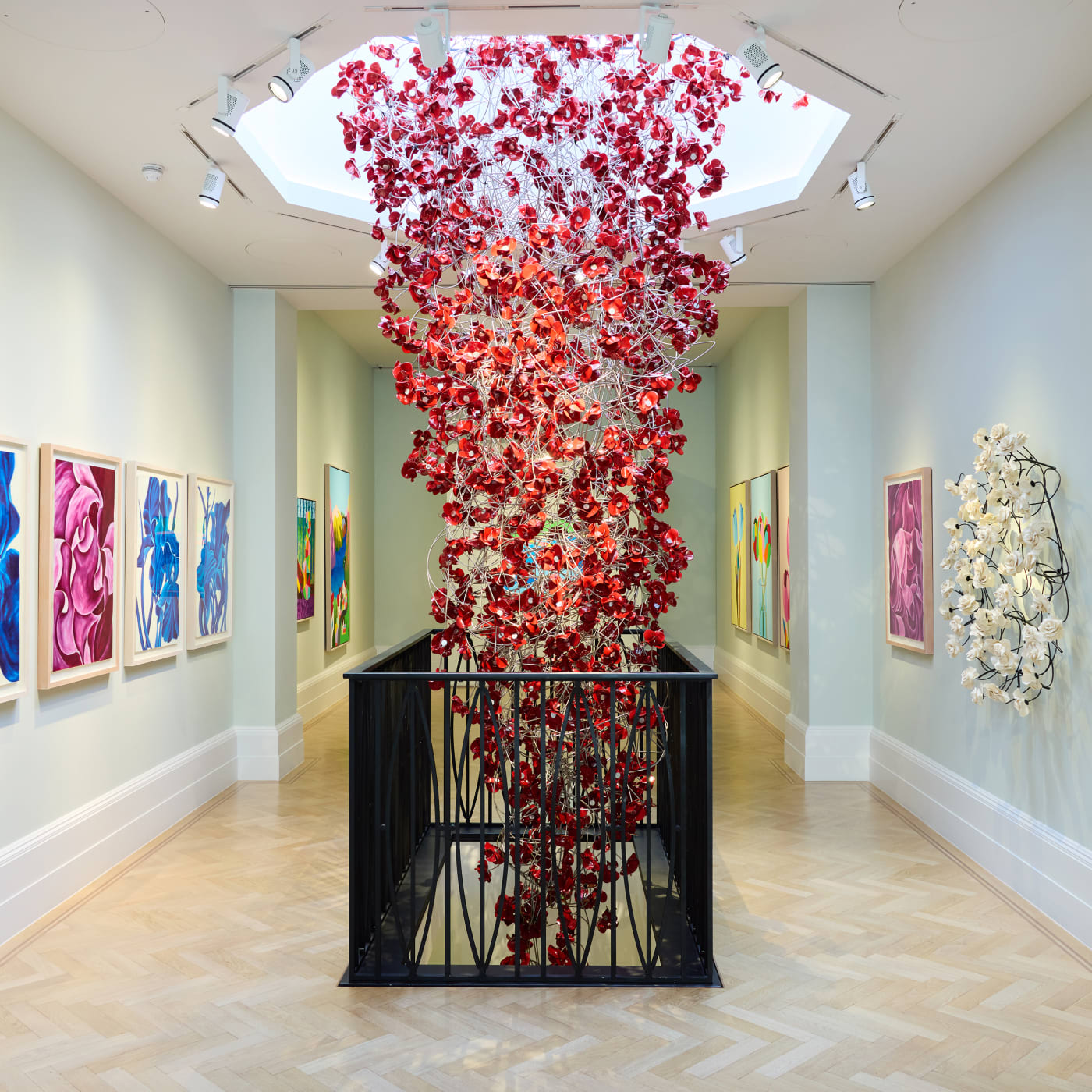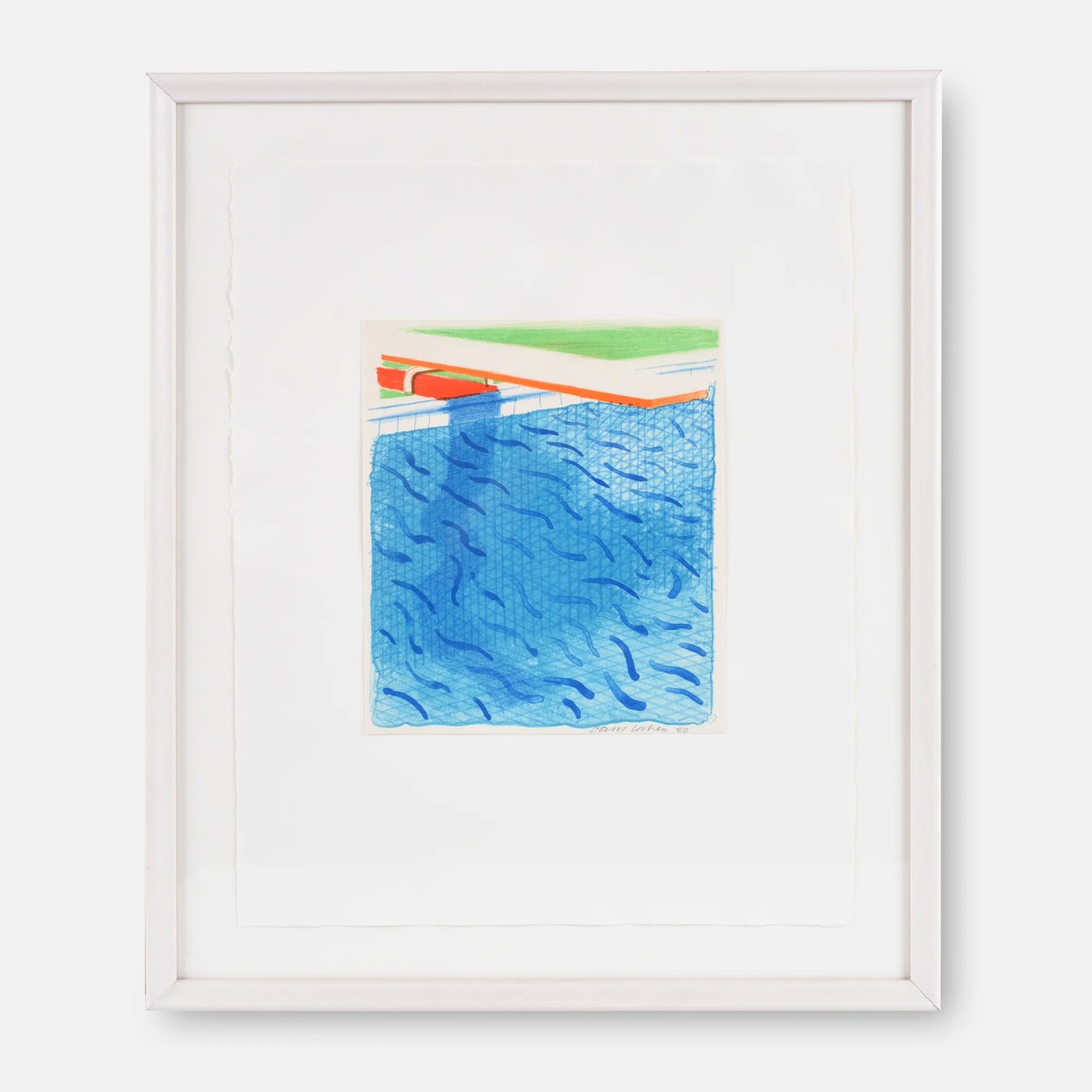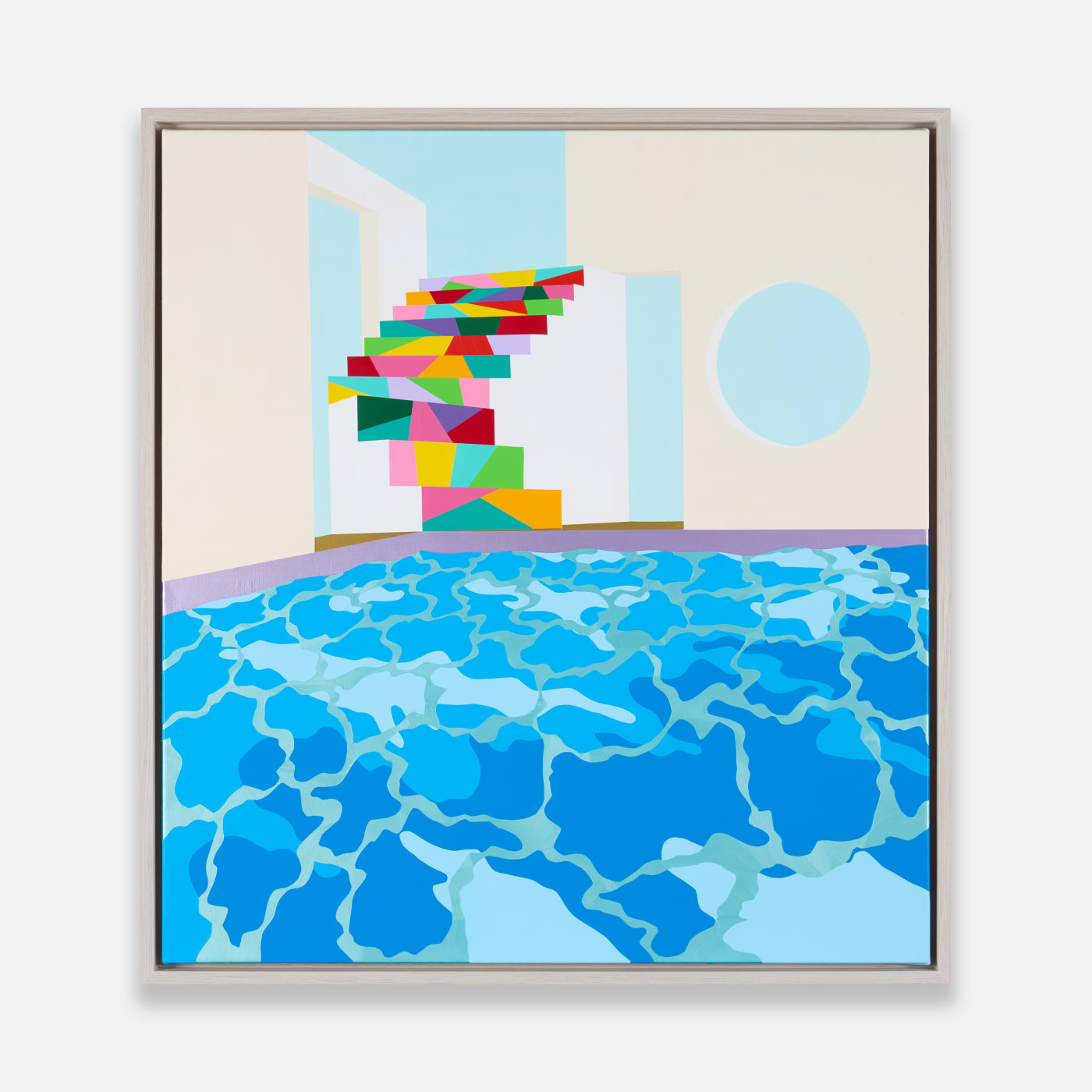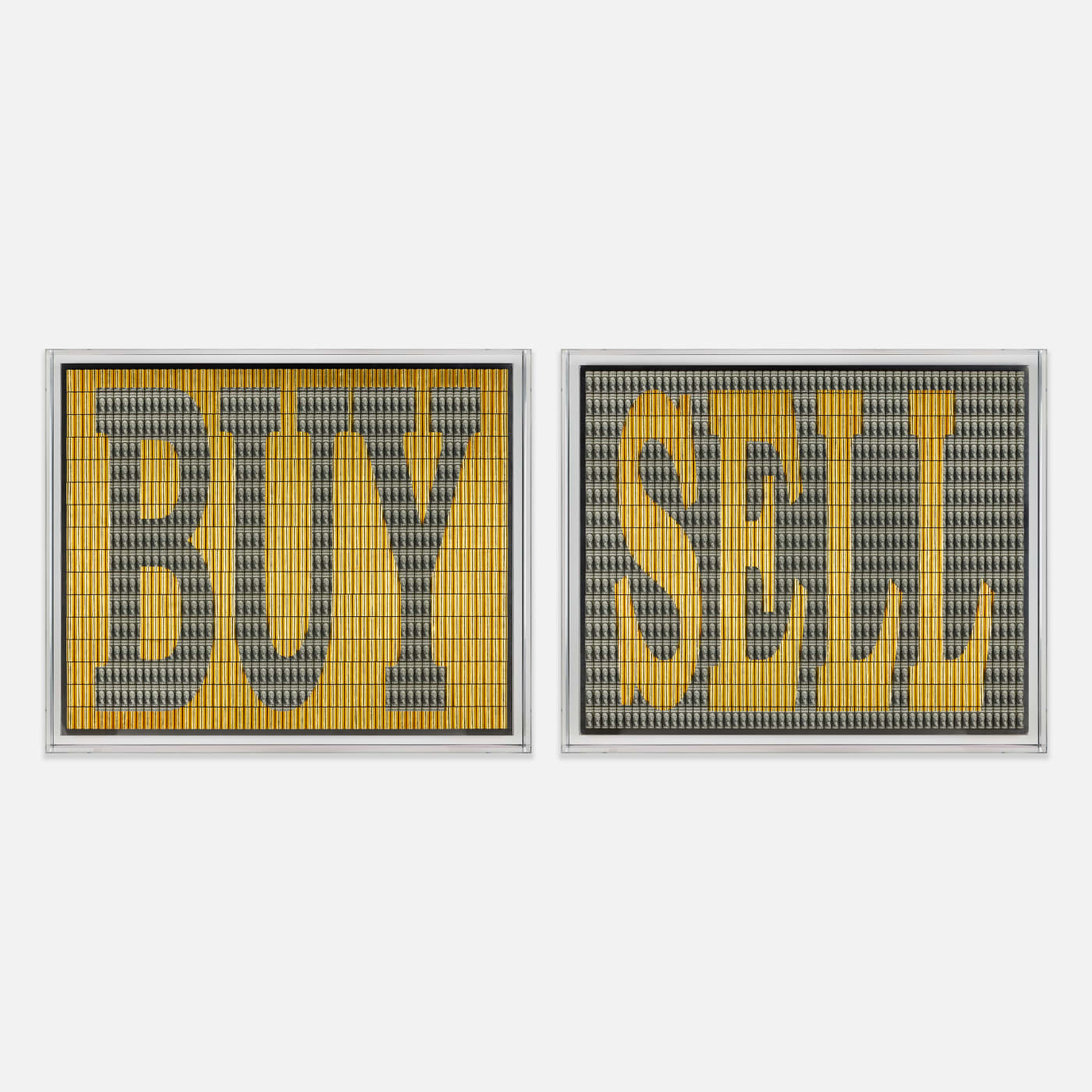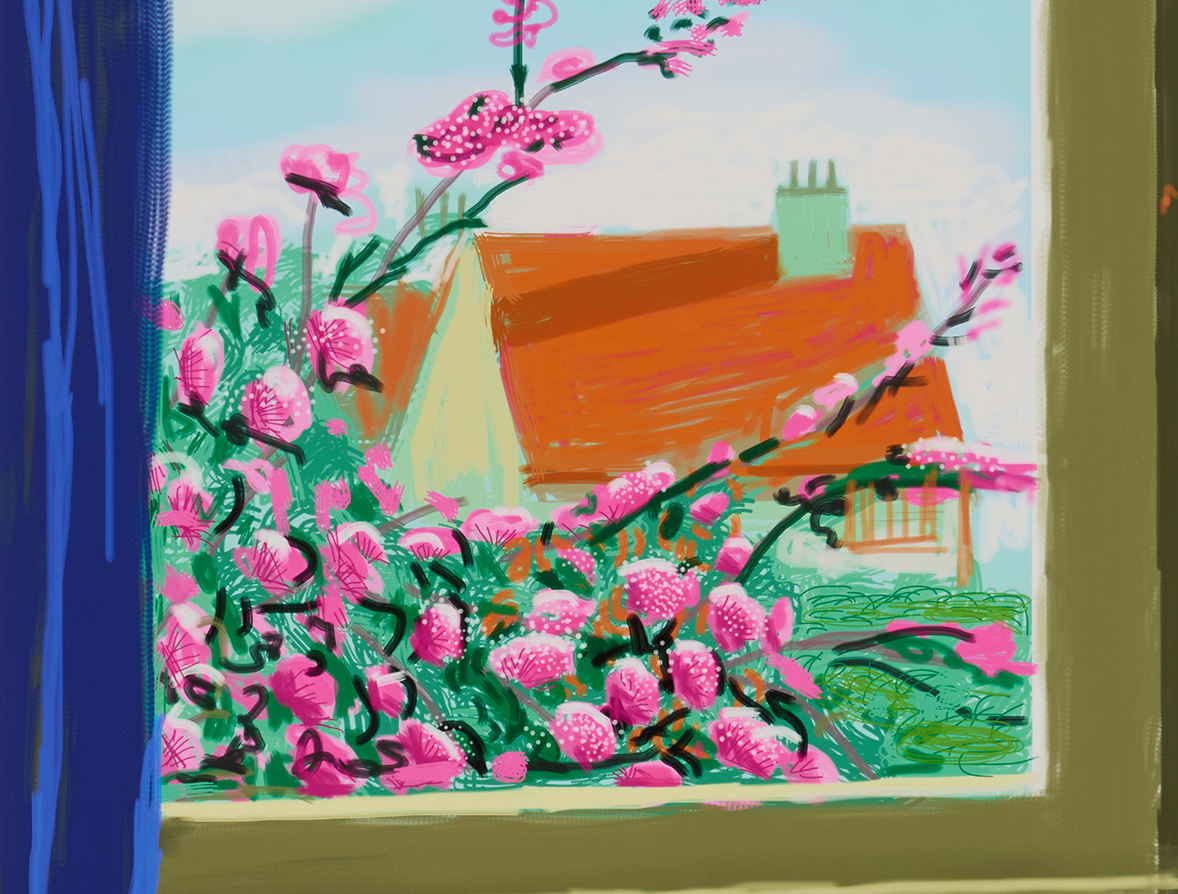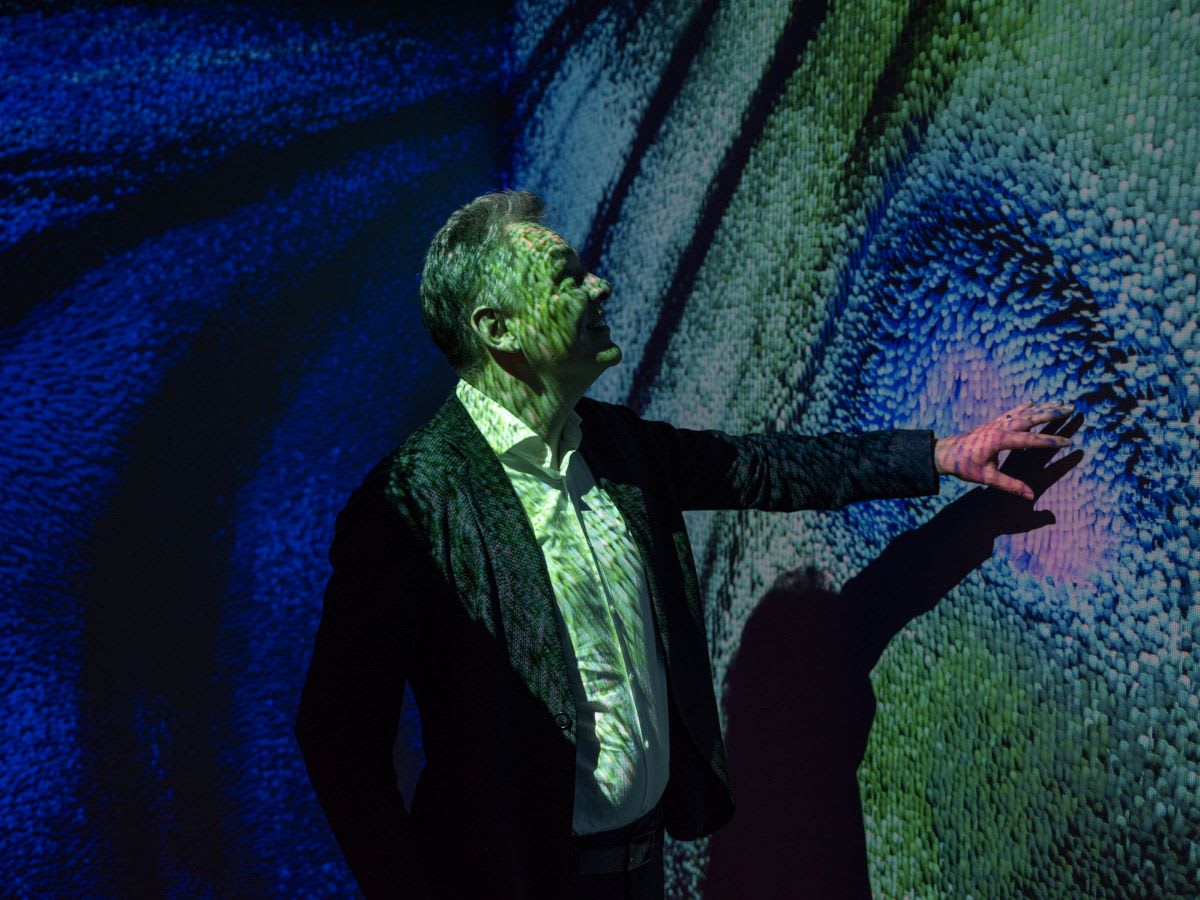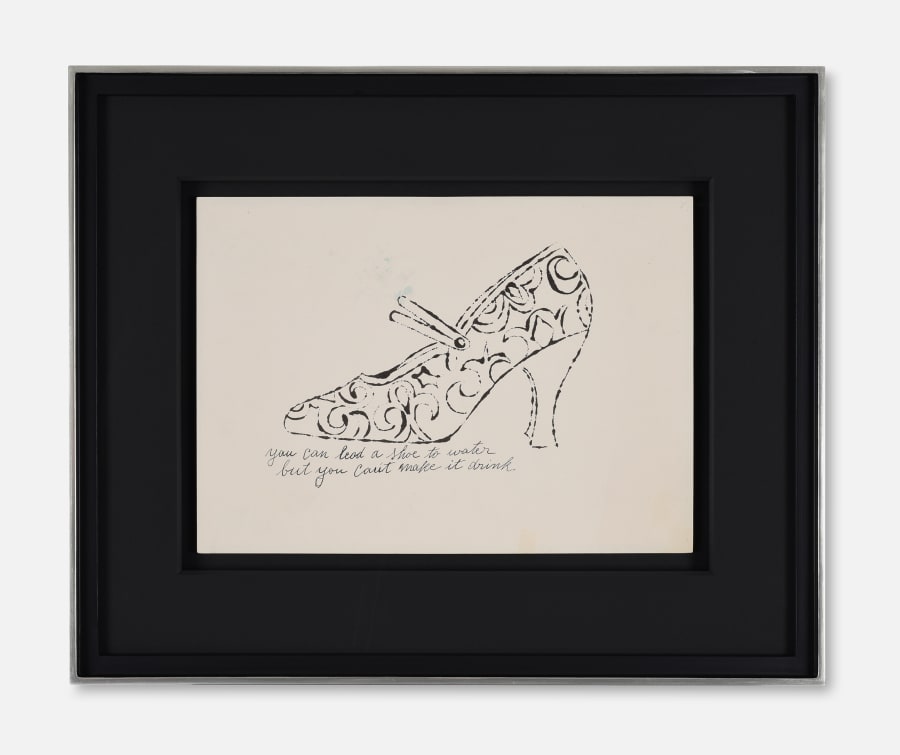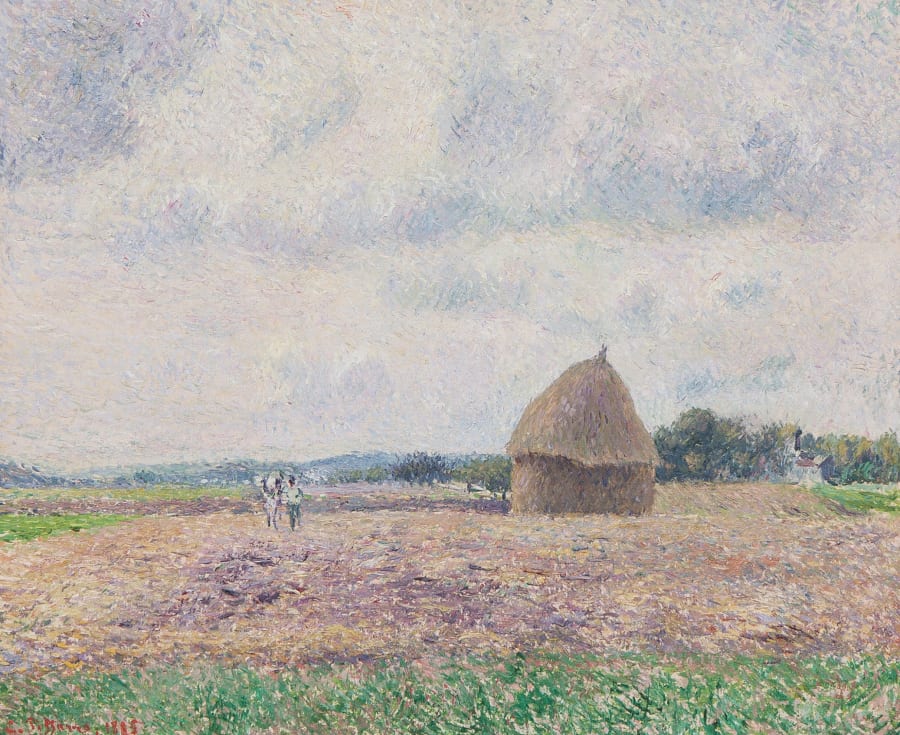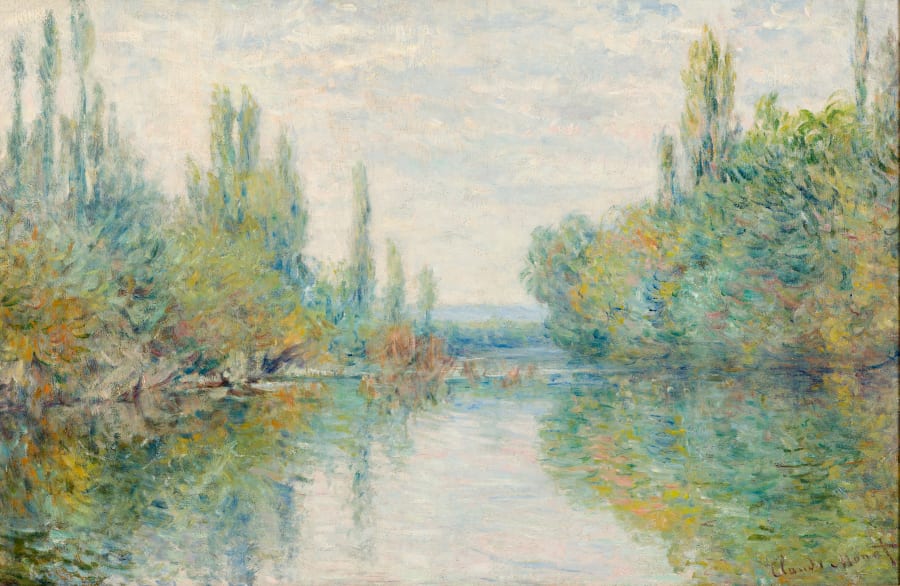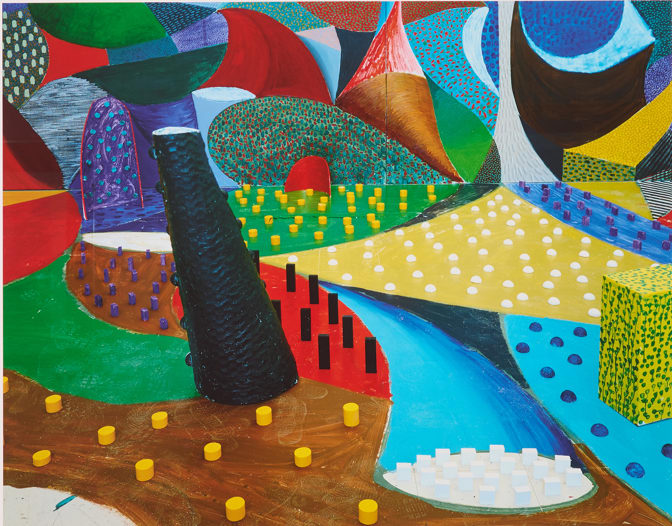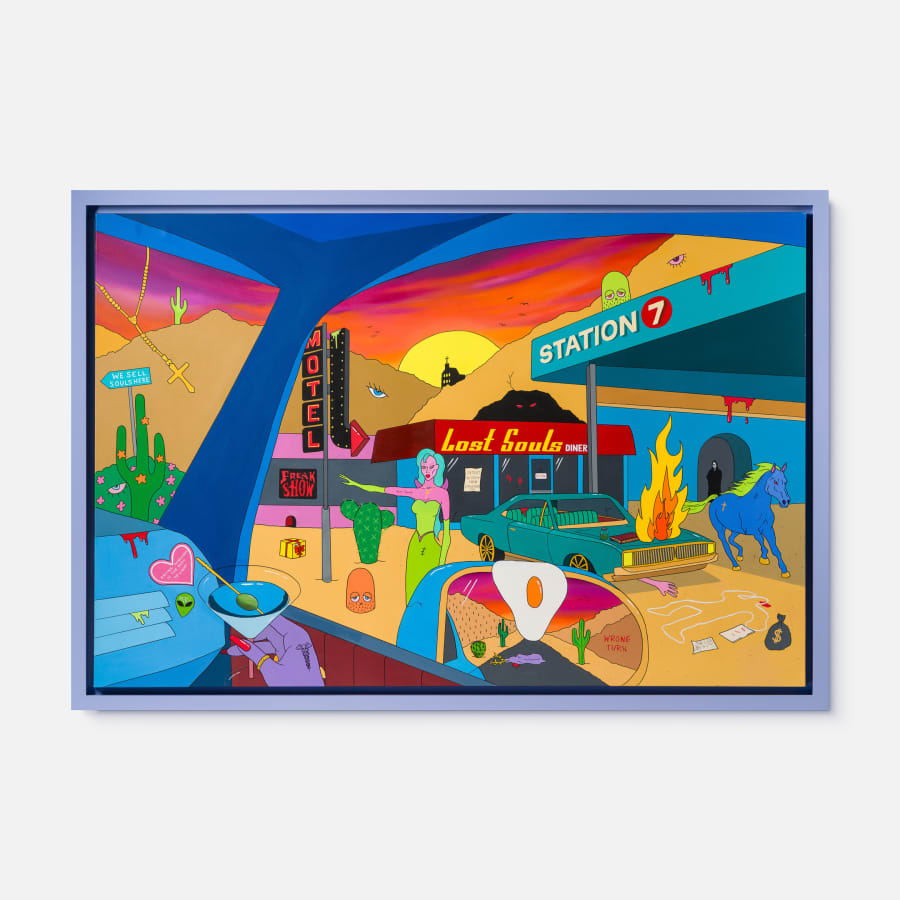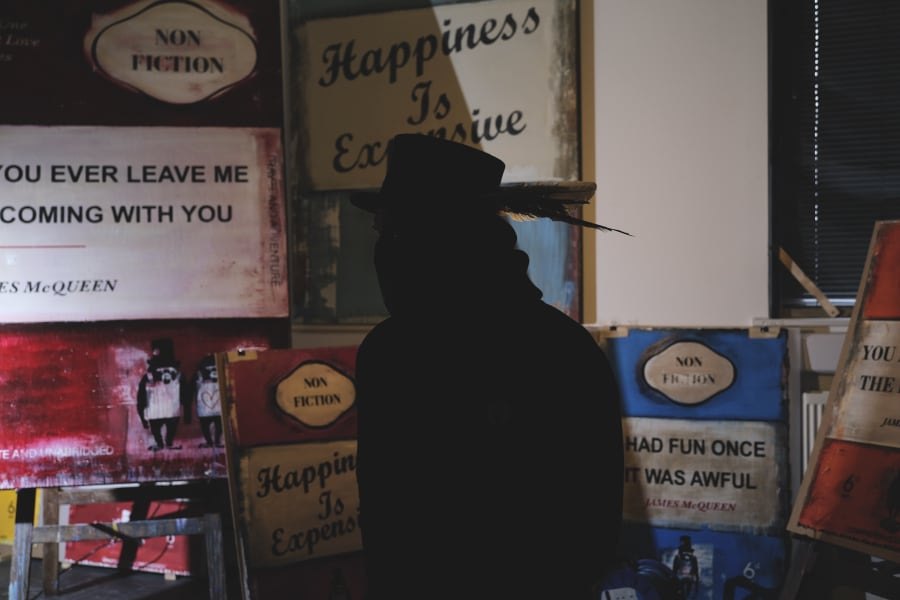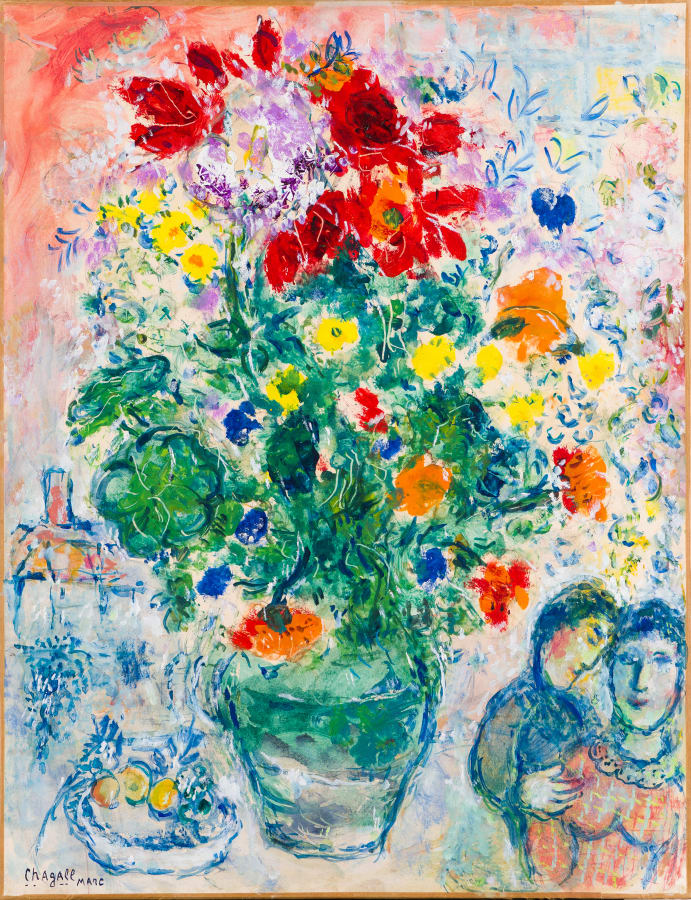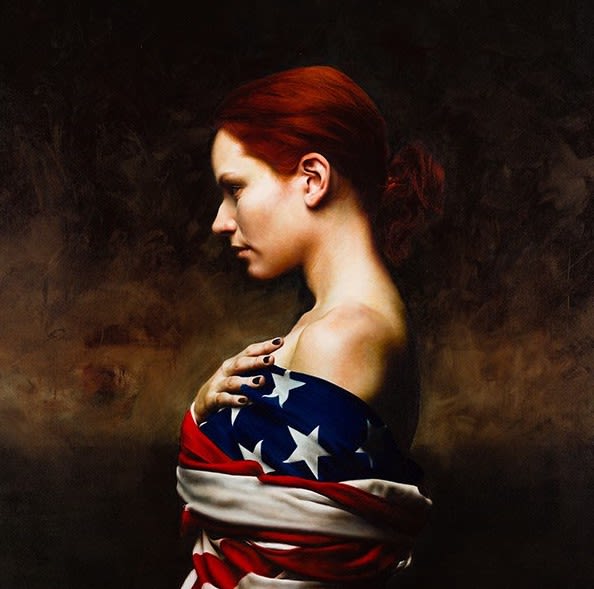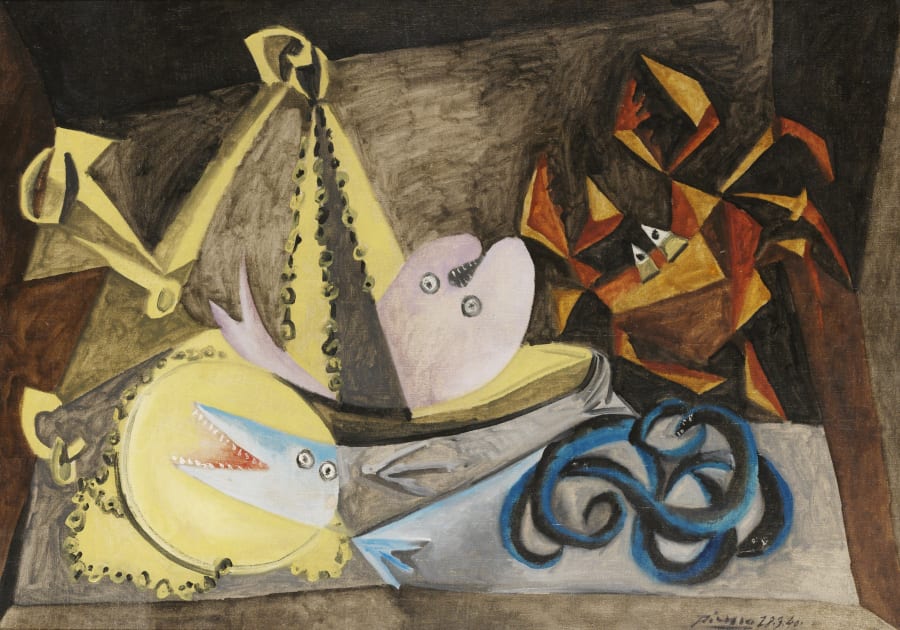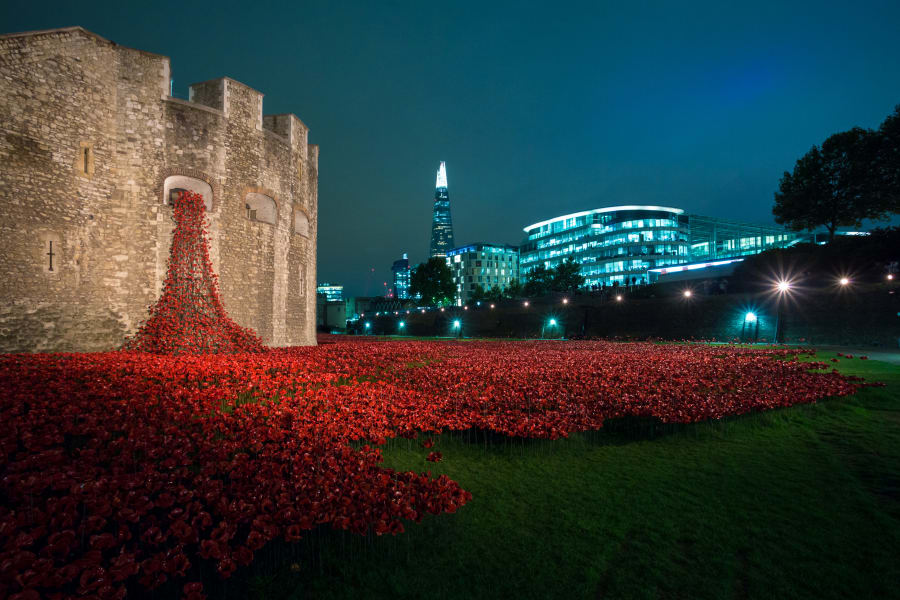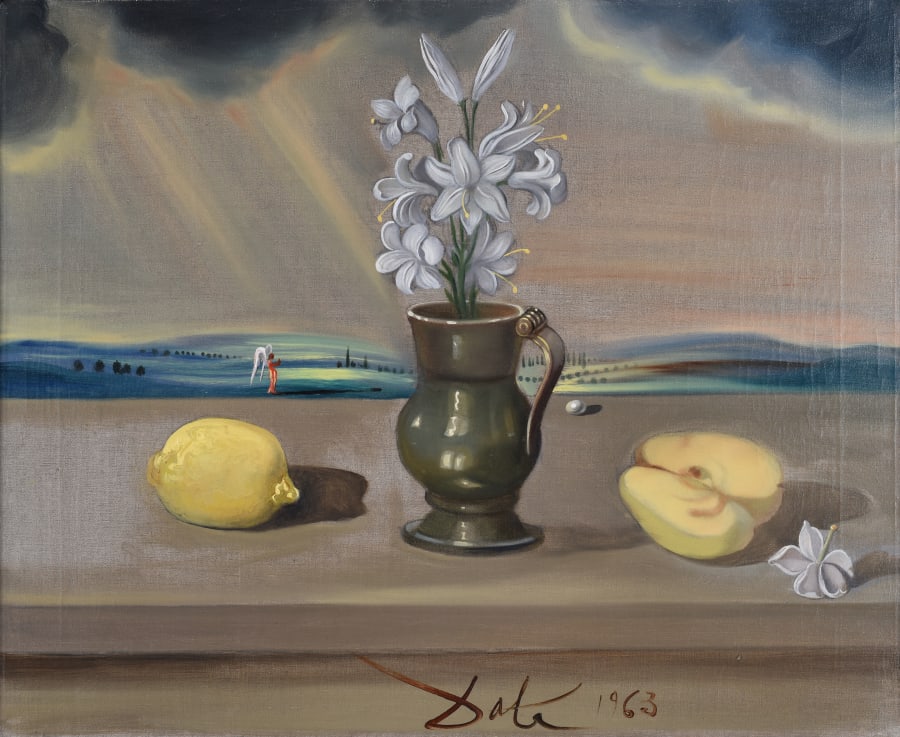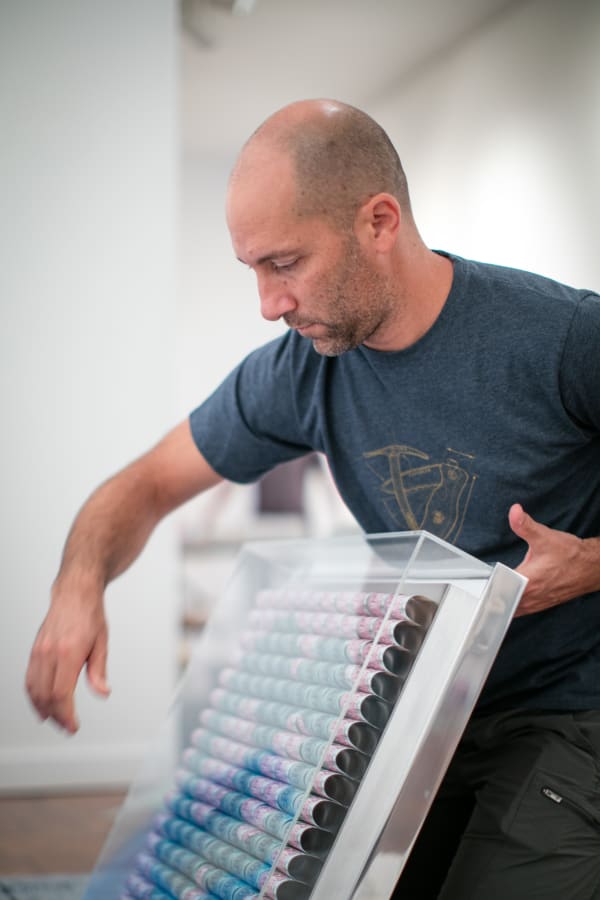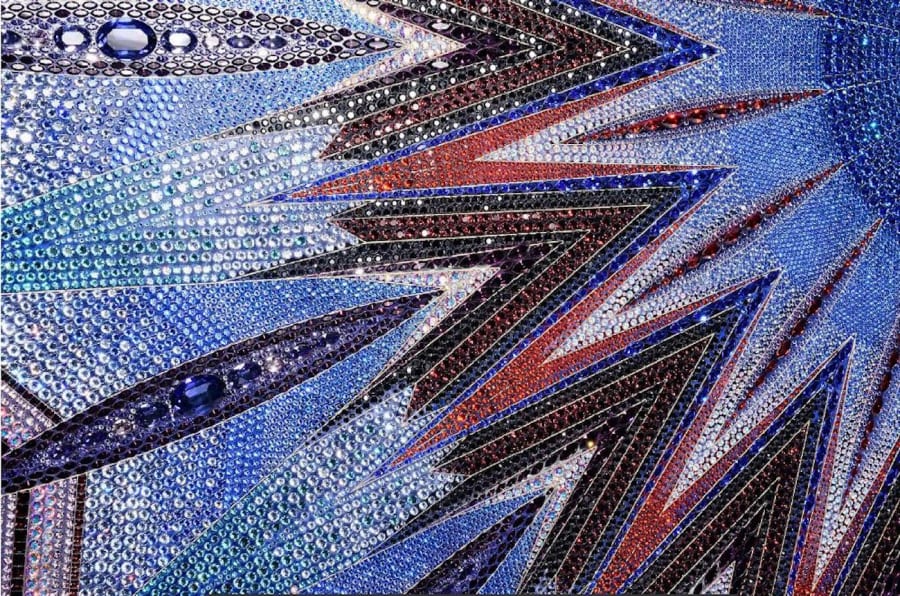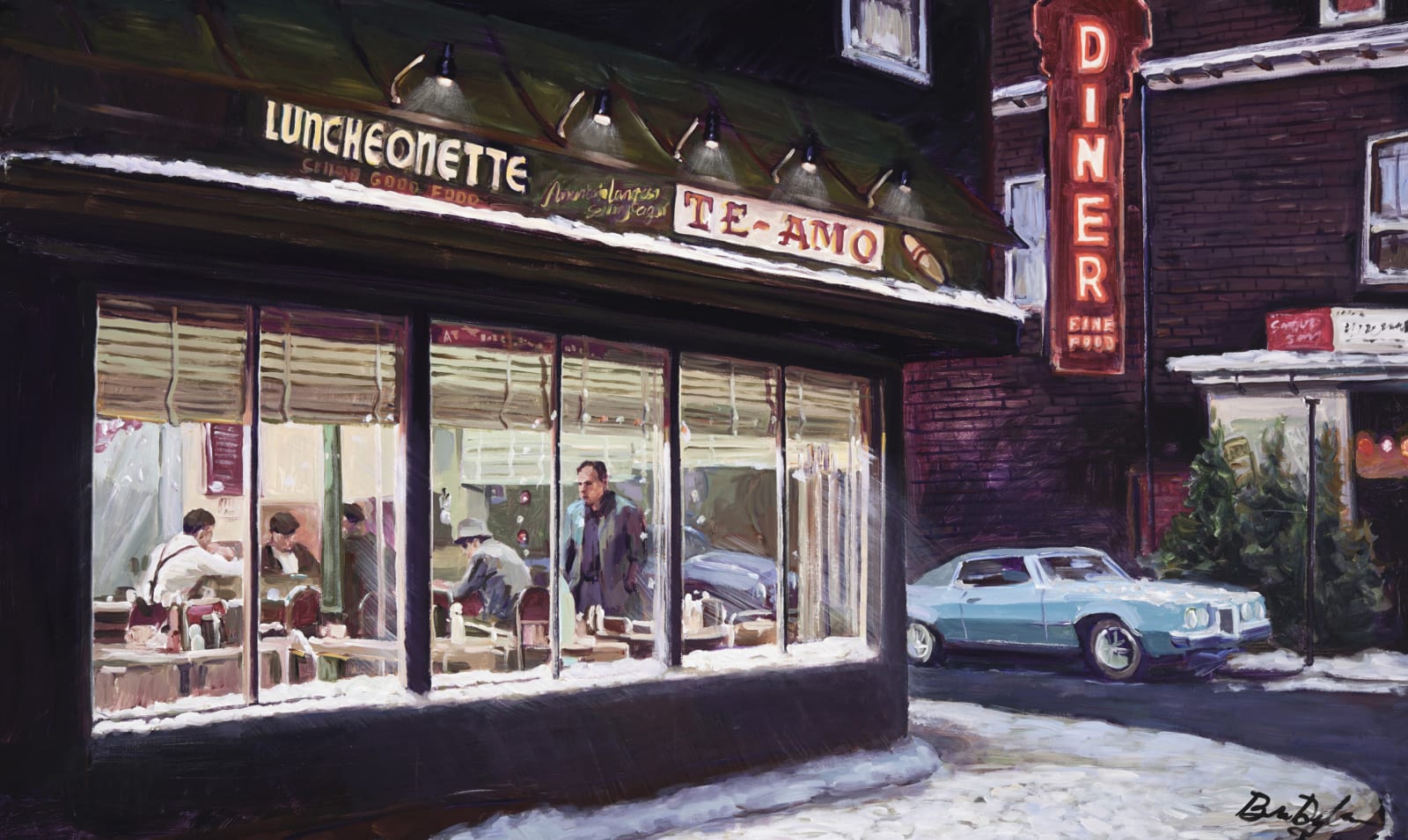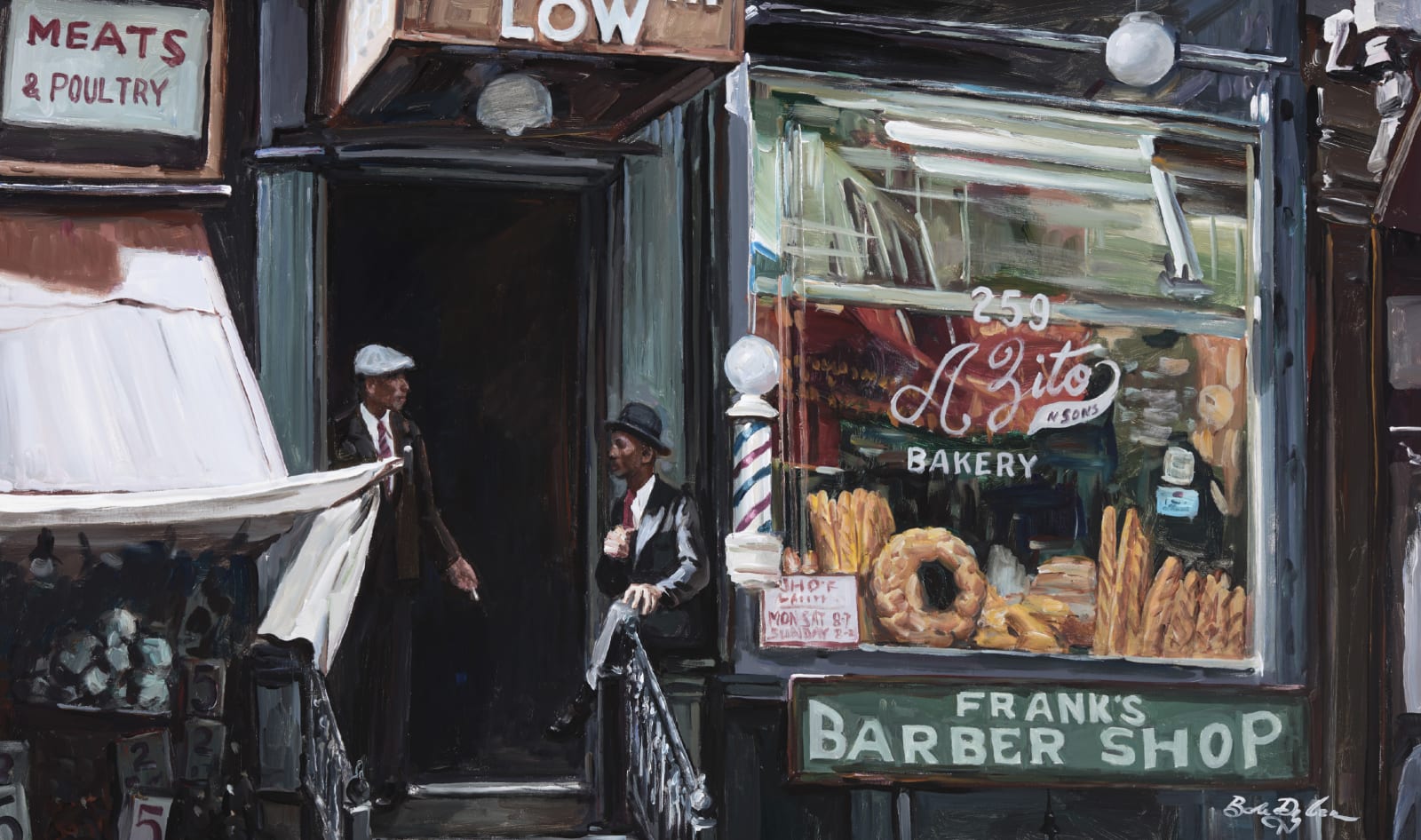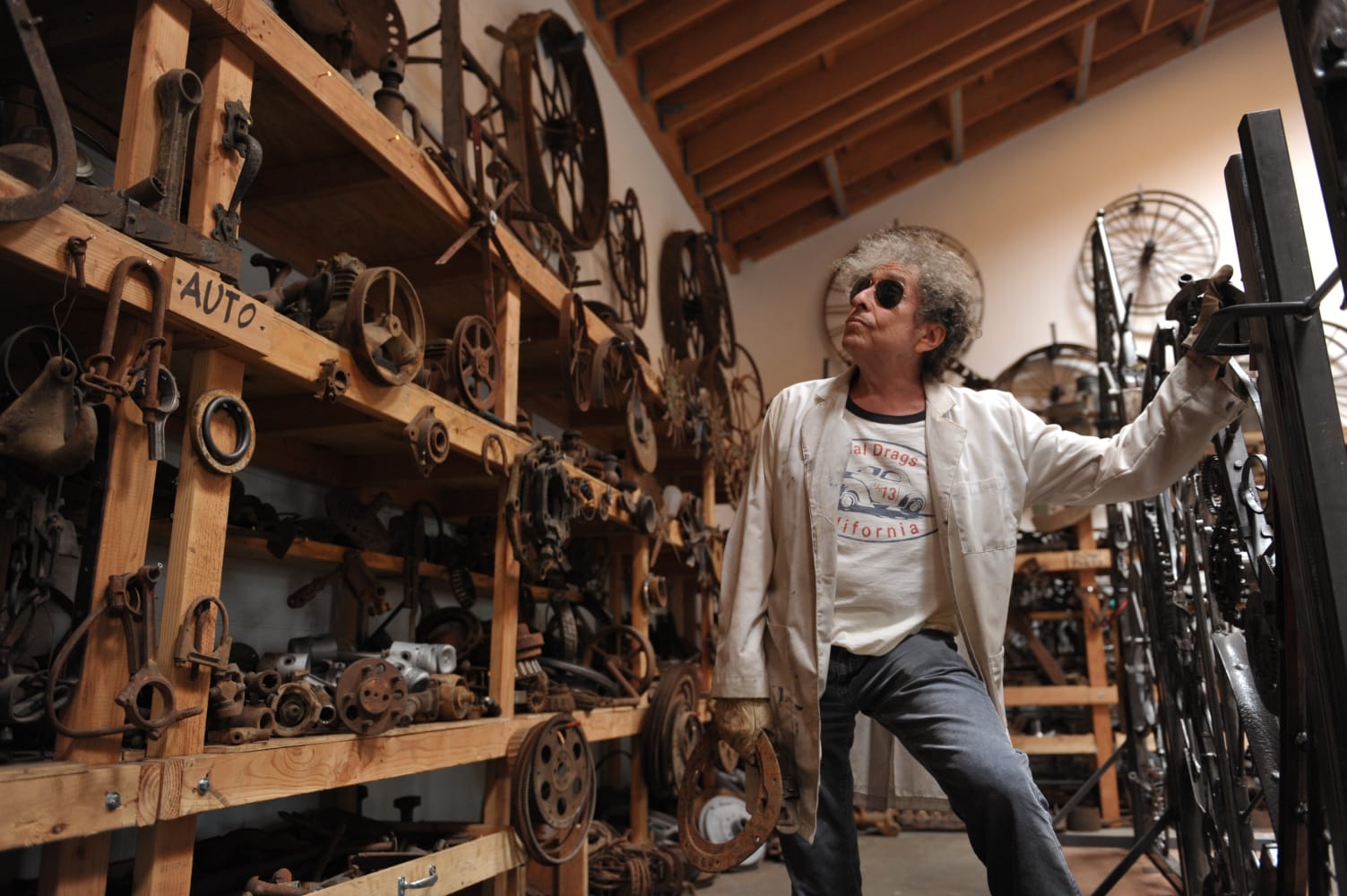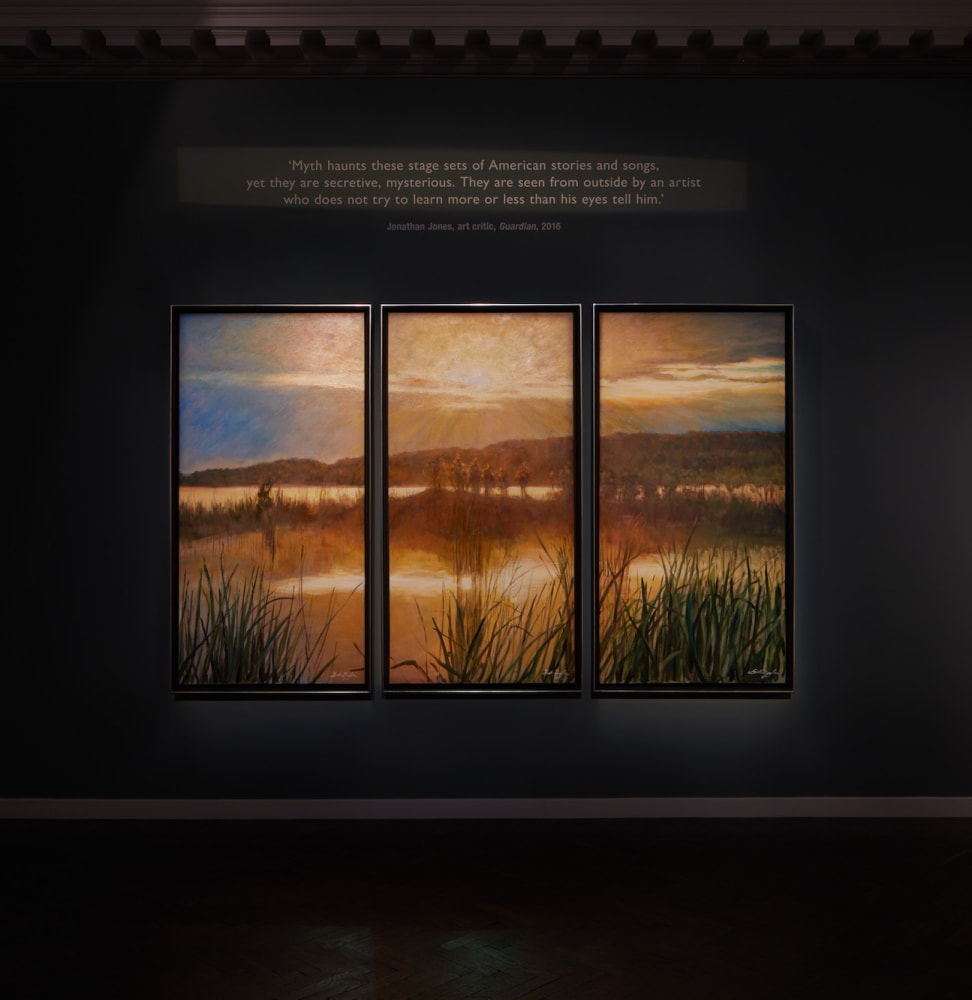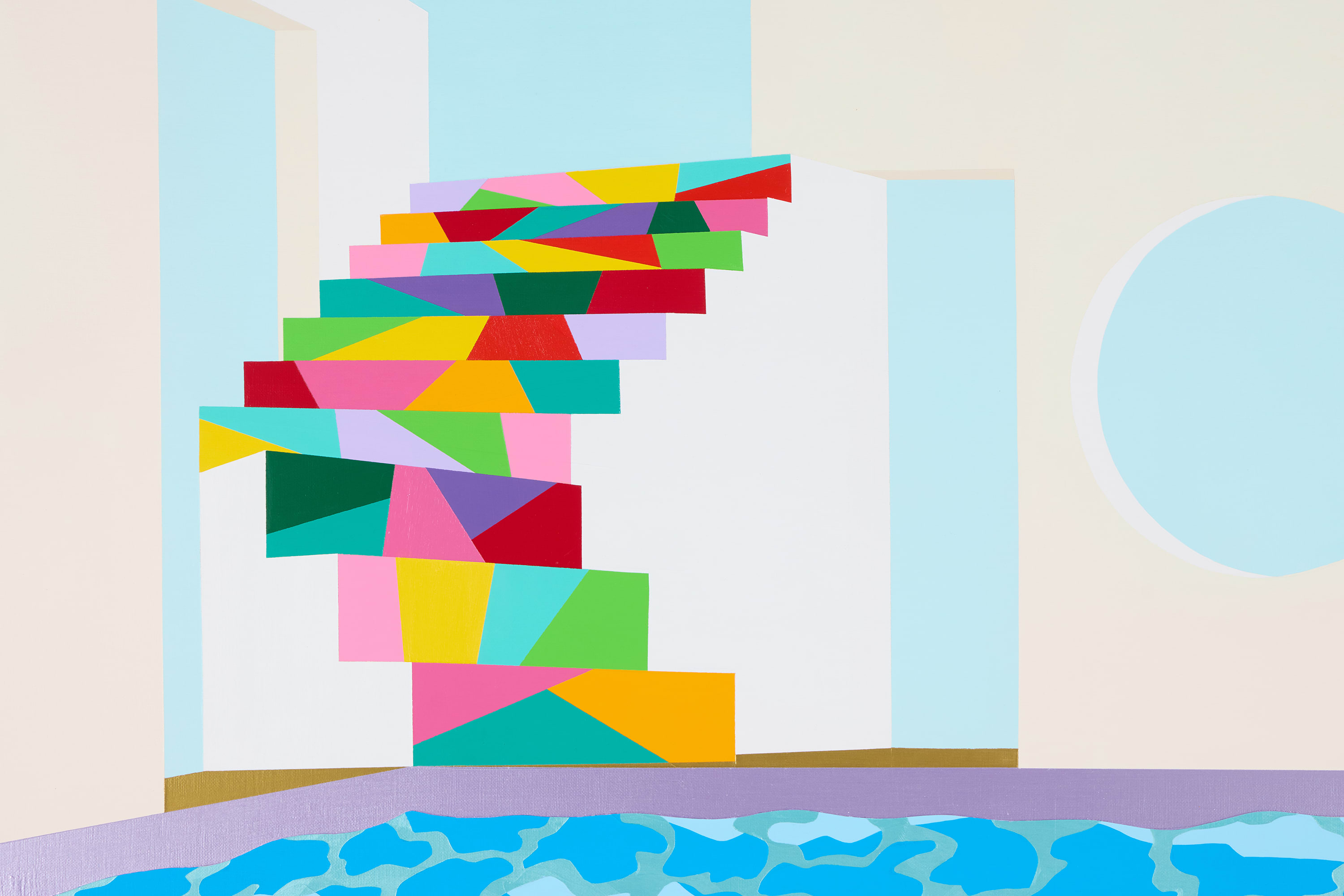

The Power of Colour
The power and immediacy of colour is not simply aesthetic, but psychological - deeply rooted in the natural world and shaped by historical and cultural associations.
Understanding colour as a language can reveal how artists use colour to shape perception and mood, adding layers of meaning to an artwork. The artists in Halcyon's Summer Exhibition harness colour as a powerful symbol to evoke emotion, trigger a collective memory, or convey messages on a subconscious level.
Below we delve into the power and meaning of Blue, Red and Gold.
If you are interested in adding to your collection speak to one of our art consultants - email us at info@halcyongallery.com.
Gold - divinity, spirituality, opulence
Throughout history and across cultures, gold has been used in works of art to denote divinity. From the gilded interiors of Byzantine churches to the haloes of saints in Renaissance altarpieces, gold has been used to reflect a deeper spiritual meaning. Although in some contexts, gold can be a symbol of the eternal and the sacred, in other settings gold can represent unbridled opulence and transient materialism. This juxtaposition between the earthly and the spiritual realms adds a layer of unsettling complexity to the works of Santiago Montoya, who uses banknotes and gold leaf to provide commentary on the idolisation of money and the insatiable pursuit of wealth in the modern world.
Montoya’s work often centres Colombian identity and engages with themes of currency, capitalism and the illusion of prosperity. Golden Forever Forever was created using precisely rolled one-dollar bills, which were then gilded with 24 kt gold leaf. The artist’s use of gold, and its historic connotations of decadence and exploitation, further entangles the work’s meaning, hinting at the unseen human cost behind material possession. By elevating the piece with a near-religious reverence, Montoya highlights the problematic deification of money in contemporary consumer culture.
Montoya holds an enduring fascination with gold and has previously experimented by incorporating gold leaf and chocolate in the 2017 exhibition Mal Paso (y Otros Senderos) at Espacio El Dorado in Bogotá. The exhibition reflected on the riches of Colombia’s land while shedding light on the problems surrounding the gold mining industry, including dangerous working conditions, exploitation and depletion of natural resources. In subsequent exhibitions, Montoya has explored the idea of El Dorado, the mythical lost city of gold. Supposedly hidden somewhere in South America, the myth became a highly symbolic allegory of the 16th and 17th century colonial expeditions, and the endless European impulse to exploit these lands.
Montoya’s continued return to gold as both a subject and a medium is a deeply personal one. His interest in the precious metal stems from his upbringing in Bogotá, where, as a child, he witnessed artisans panning for gold in the rivers close to his home. This tedious and low-cost mining technique, which involves workers sifting the riverbed with a sieve-like pan, manually releasing sand, soil and alluvial deposits in the hope of revealing any gold sediment that lies within the river. The work is painstaking and returns a low yield of gold. This early exposure to the laborious process of extracting the metal has deeply influenced Montoya’s perception of value, both in economic and cultural terms, and he seeks to use it as a medium to challenge systems of power.

